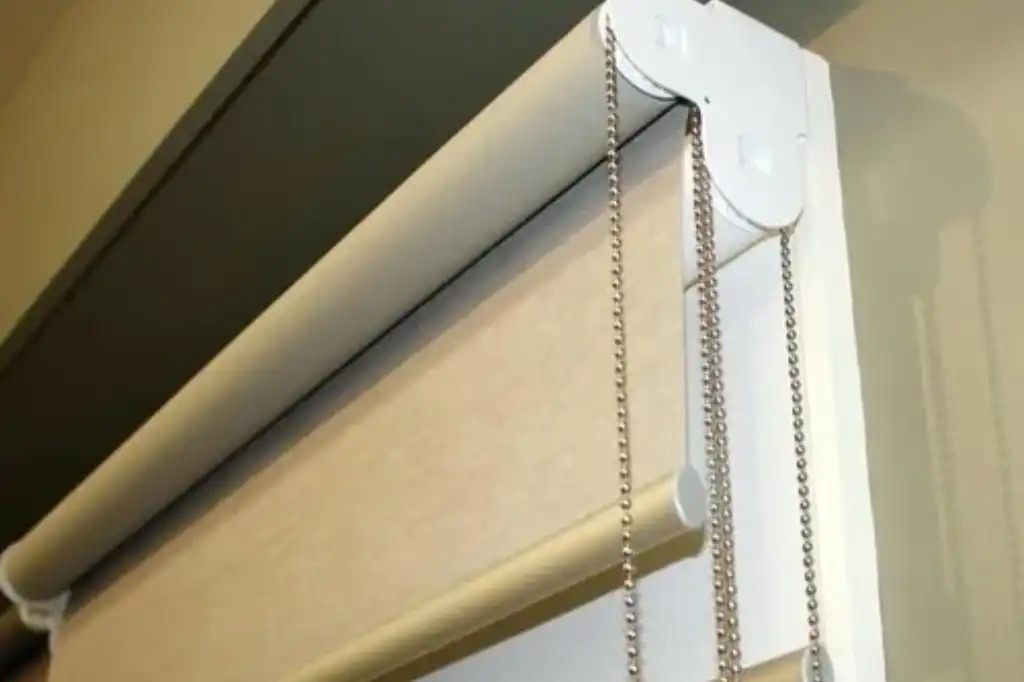When designing or renovating a bathroom, selecting the proper flooring is essential. In addition to being durable and resistant to moisture, it should also contribute to the aesthetic allure of your space. Finding the right flooring may be time-consuming, with so many possibilities. But have no fear! Dubai Curtain will save you by introducing new stylish and functional bathroom flooring options. So let’s delve in and determine which flooring best meets your requirements and preferences!
How to Choose the Most Suitable Bathroom Flooring?
Choosing the best bathroom flooring material involves various criteria. First priority: durability. Bathrooms are high-traffic areas constantly exposed to water and humidity, so the flooring must resist deformation or deterioration.
- Moisture resistance is another significant factor. Consider using vinyl or linoleum, which are specifically designed for damp environments.
- In addition to durability and moisture resistance, consider the bathroom’s desired design and aesthetics.
- Do not overlook safety! Choose a flooring material that provides excellent traction even when damp, as bathrooms can be slick. If slide resistance is a concern, you should avoid highly polished surfaces like marble.
Vinyl or Linoleum-Coated Bathroom Floors
Vinyl and linoleum are popular options for bathroom flooring due to their affordability and durability.
- Synthetic vinyl is available in various styles and colors to complement any bathroom design scheme. It is water-resistant and appropriate for bathrooms and wet settings.
- Linoleum contains natural ingredients like linseed oil and cork grains. Its antibacterial abilities keep the toilet clean. Linoleum can sustain significant foot traffic and is durable.
- Vinyl and linoleum need scrubbing or mopping to stay clean. They are comfortable and acoustically insulated.
- However, improperly placed or managed vinyl may generate VOCs. Vinyl flooring with minimal VOC emissions or linoleum may improve indoor air quality.
- Vinyl and linoleum make great bathroom flooring.
- Sturdiness, affordability, maintenance friendliness, and various design options.
Bathroom Subflooring Composed of Cork
Subflooring is a frequently disregarded aspect of bathroom renovations. However, selecting the proper material for your subfloor can make a substantial difference in the durability and longevity of your bathroom flooring.
- Consider Cork because Cork is a natural, renewable material with several bathroom benefits. It resists mold, mildew, and moisture, ideal for toilets and other damp areas. Cork’s insulation keeps your feet warm on cold mornings.
- Cork subfloors are additionally simple to implement. They are available in interlocking tiles or coils for simple installation over existing flooring or concrete surfaces. In addition, Cork provides superior sound insulation, reducing noise transfer between floors.
- Biodegradability is another benefit of cork subflooring. Cork may be removed from cork oak tree bark without hurting the tree.
Bamboo Flooring in the Toilet
- Bamboo flooring has been more popular in recent years because of its durability and low environmental impact. But do they work for your new bathroom design?
- It can withstand high humidity and wetness, making it ideal for use in public toilets. Bamboo’s inherent antibacterial properties make it mold- and mildew-resistant, making it an excellent material for a germ-free bathroom.
- Bamboo flooring also has a pleasing look. These materials’ unique grain patterns and rich tones make any room seem more welcoming and beautiful. A wide range of alternatives are available to you to match your bathroom style, regardless of whether you favor bright or dark colors.
- Regarding upkeep, bamboo floors are relatively simple to maintain. Regular sweeping or vacuuming, followed by infrequent moist mopping, should be sufficient to maintain their pristine appearance. However, it is crucial to note that prolonged exposure to excessive moisture can cause edema or deformation, so be mindful when washing up the spillage.
- Regarding installation, bamboo flooring is available in various forms, including solid planks and engineered boards. Due to their increased resistance to moisture penetration, the latter may be more suitable for restrooms.
- Before selecting bamboo floors for your bathroom renovation, it is important to consider several factors, even though they offer numerous advantages regarding sustainability and design. Ensure proper caulking around restrooms and basins to prevent long-term water damage.
Wood and Laminate Bathroom Flooring Options
Due to its durability and beauty, wood and laminate floors are becoming more popular. These materials are attractive and easy to maintain as well.
- Wooden surfaces in the lavatory can create an opulent, spa-like ambiance. However, it is essential to select a timber species resistant to moisture. Due to their inherent water resistance, hardwoods such as teak, oak, or maple are excellent options.
- Due to its affordability and adaptability, laminate flooring is another excellent restroom option. It can simulate the look of hardwood or stone without the high price tag or difficult maintenance requirements.
- Laminate and wood floors come in many styles, colors, and treatments, letting you customize your bathroom. Due to interlocking systems and adhesive backers, these materials are easy to apply.
- Remember that proper installation and routine maintenance are the keys to assuring the longevity of your bathroom’s wood or laminate surfaces.
Natural Stone Floor Tiles for the Bathroom
Homeowners often choose natural stone bathroom tiles. It’s obvious why! A bathroom renovation with natural stone is elegant and sophisticated. These tiles also come in different colors and designs, letting you customize your design.
- Natural stone bathroom floor tiles are durable. For high-traffic spaces like toilets, the stone is sturdy and deterioration-resistant. Whether you choose marble, granite, or slate, your new flooring will last.
- Low maintenance requirements are an additional advantage of natural stone tiling. Unlike other types of flooring that require regular, thorough cleaning or refinishing, natural stone only requires regular sweeping or vacuuming and occasional mopping with a mild cleanser.
- The aesthetic appeal of natural stone is similar. Each tile has its pattern and texture; no two are identical. This indicates that your lavatory floor will be unique. In addition, natural stone has an enduring beauty that never goes out of style.
- However, it is crucial to note that although natural stone is attractive and durable, it must be properly sealed upon installation to prevent staining and moisture damage. Some natural stones can be treacherous when damp; therefore, placing matting or carpets near water-prone areas may be necessary as a safety precaution.
- Nevertheless, if you want to create an opulent bathroom with enduring beauty, natural stone floor tiles may be the best choice for your next renovation project.
In the End
The most famous choice of our clients is eco-friendly flooring, so Consider the significance of a dependable subfloor like a cork when selecting materials for your bathroom renovation. By considering these given factors – durability, moisture resistance, aesthetic preference, and safety – you will be well on your way to selecting the ideal bathroom flooring!




